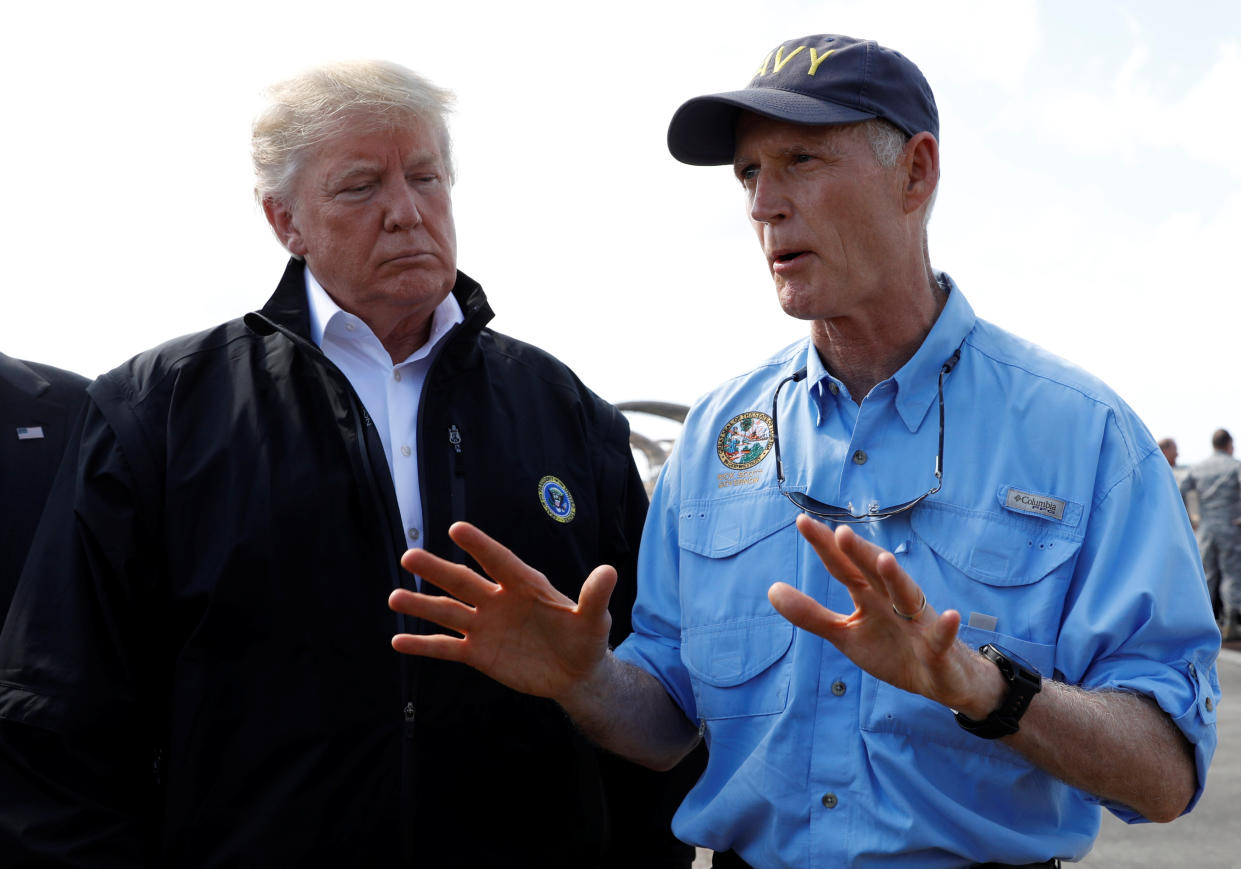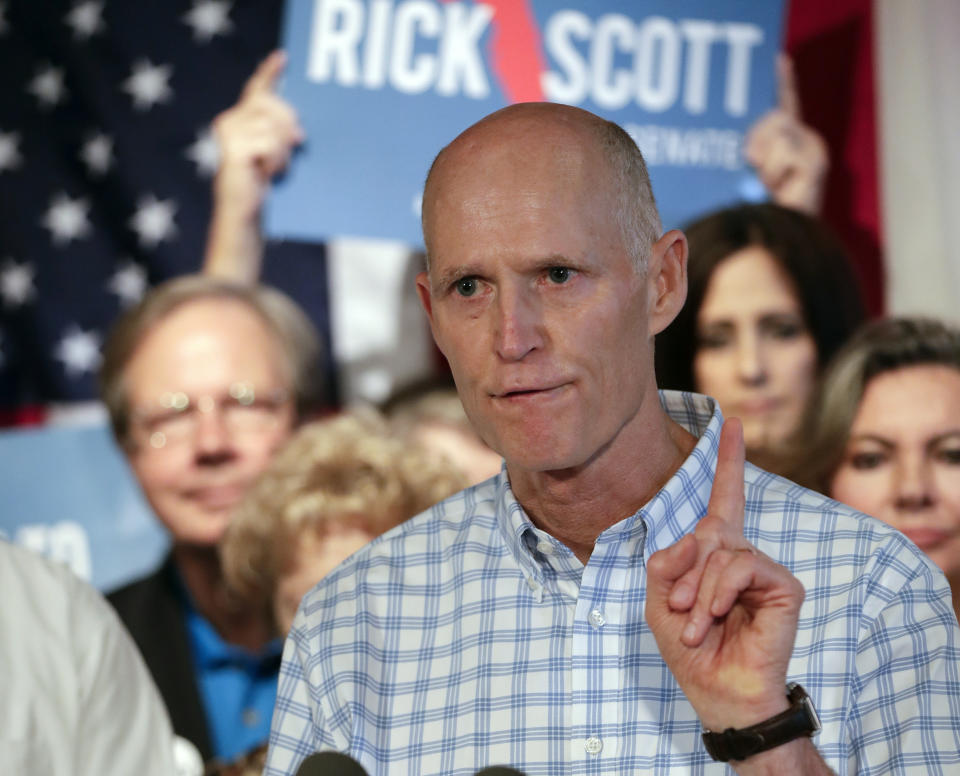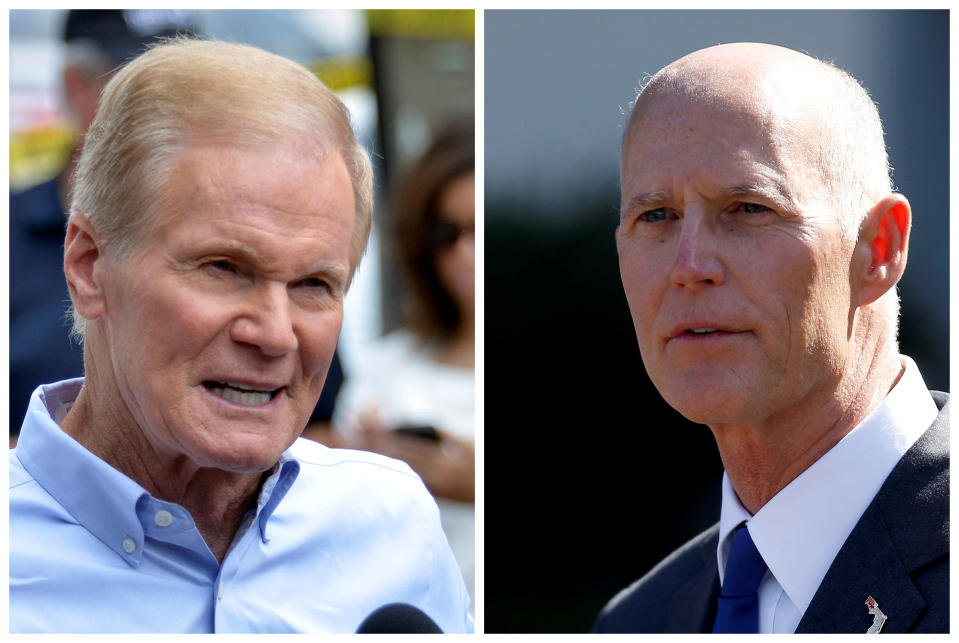Will Rick Scott’s playbook withstand a potential Democratic wave?

WASHINGTON — Florida Gov. Rick Scott has won two hard-fought elections over the past decade by spending heavily on TV early in the race, building a lead and then withstanding a late rally from his opponent.
That first part of that scenario has played out so far in Scott’s latest campaign, his quest for a U.S. Senate seat in the November elections. Scott grabbed a lead in the race in late June but fell behind over the past month.
But a key element is missing compared to his past wins. It’s not a Republican wave year, like it was in 2010 and 2014. Instead, the Democratic base seems more motivated to vote than the GOP rank and file. That simple fact could be the biggest challenge for Scott, the former health care executive whose net worth is estimated to be around $250 million.
“Scott’s won two 1-point races with the wind at his back and I’m not sure the wind is at his back this time,” Steve Schale, a veteran Democratic consultant in the state, told Yahoo News.
Scott, a Republican, is trying to unseat incumbent Sen. Bill Nelson, a Democrat serving his 18th year in the Senate. Scott’s advantages include his personal fortune and his ability to raise money, his relentlessness on the campaign trail — and his relative youth, being, at 65, a decade younger than the 76-year-old Nelson.

Schale was an adviser to former Gov. Charlie Crist in the 2014 election, when Crist ran against Scott, and said that Nelson’s challenge against Scott this year has been similar.
“Running against Rick Scott, at times it is demoralizing. You know you only have so much money. You know he wants to get you into a war of attrition. You know you can’t win that. You’re polling all the time and trying to figure out the amount of pain you can take,” Schale said.
Schale said the trick, if you are running against Scott, is knowing when Scott’s TV spending begins to inflict permanent damage on your candidate.
“What is the threshold when it’s a surface wound and when it’s a real one, and when it’s a real one, you have to go up [on TV too],” Schale said. “At some level, you’ve got to make a decision that you’re going to cut a finger off but you’re not going bleed to death.”
Nelson’s campaign held off on spending on television until the end of summer, after the Republican primary ended. It did not run TV ads until Aug. 29, the day after. Schale called that strategy “very smart.”
Public polling backs that assessment up. Nelson’s poll numbers in the RealClearPolitics average were 44 percent at the beginning of September, just after he began running TV ads. Nelson is now at 47.6 percent with Scott at 45.2.

Many other factors play into the dynamics of any race. The hearings for Supreme Court Justice Brett Kavanaugh were a major story during that time, and Scott’s numbers started to move down in mid-September, around the time when Christine Blasey Ford came forward with allegations of sexual assault against Kavanaugh. Both Nelson and Scott have moved up a point since Kavanaugh was confirmed two weeks ago, suggesting that the final result energized both sides.
President Trump, who endorsed Scott and won the state in 2016, toured damage from Hurricane Michael on Monday with the governor.
Scott has also come under protest at a few events over a mounting environmental crisis: Toxic green algae are moving from freshwater estuaries on the east coast into the Gulf Coast side of the state; and what’s known as a “red tide” off the coast, which has been killing fish in the gulf, has now reached the Atlantic side of the state in the past week.
But TV ads are one of the primary ways that many voters form opinions about the race and the candidates, even when targeted online advertising is becoming more sophisticated.
The Florida campaign is massively expensive, with both sides on track to spend over $100 million in the race, adding up spending by each candidate’s campaign and the outside groups supporting the candidates, according to Curt Anderson, an adviser to Scott.

About half that total — for each campaign, Anderson said — will be spent in the final three weeks of the race.
Anderson said that Scott’s internal polls still showed him in the lead, in contrast with what the public polling showed.
“It’s not over by any means, but right now we are in the driver’s seat,” Anderson told Yahoo News. “I’ve been in campaigns where you won it three weeks out and lost it later. I’m not cocky. Over the past few weeks, all our ads are positive and all Nelson’s are negative, and that usually tells you what’s going on.”
Anderson also said that the primary showed that the Democrats’ national advantage may not be as formidable in Florida as it is in many other states. Democratic turnout in the primary was up 80 percent from 2014, but Republican turnout was up 70 percent.
Voting has already begun via absentee ballot and will pick up in earnest when in person early voting begins next week on Monday in some parts of the state. Schale estimated that around 500,000 Floridians have already cast a ballot via absentee ballot and said he expects around 7 million votes this year, up by a million votes from the 2014 total.
Read more from Yahoo News:



